A Tour of The Historic Elmendorph Inn - Red Hook
Posted by Coldwell Banker Village Green Realty on Thursday, September 9th, 2021 at 11:49am
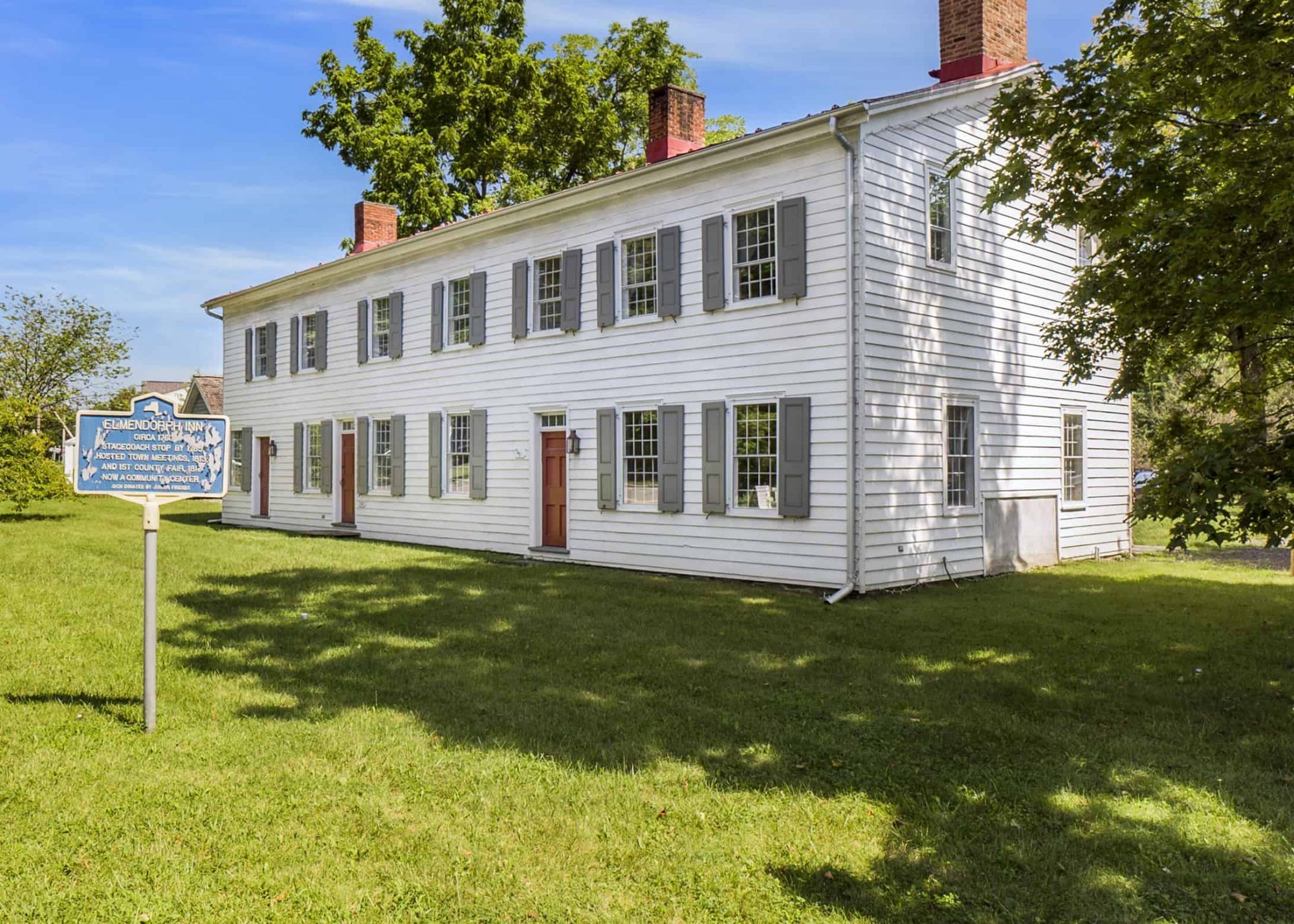
Historic Homes Of The Hudson Valley
The Elmendorph Inn, Red Hook NY
There’s something about a house with centuries of history – a romance, a feeling of being connected to the people who came before you by sharing their home, and of being connected to those who will go after you if you are a good steward of the building. As Americans, it’s possible that we find old houses particularly attractive because of their scarcity. We’ve only got 400 years of history here, and since early Americans built their houses largely from wood, we’ve lost many to fires and other misfortunes. Great old houses with original detail are rare! Europeans probably think we’re foolish to think of homes from the 1700’s and 1800’s as old, but we do, and we cherish them. All this is to say, that us real estate geeks have a real appreciation for an early American house that’s been restored to glory – and the Elmendorph Inn in Red Hook is just such a classic. Better still, it's a monument to the way a community can grow and change over the centuries and still maintain its essential character.
A confluence of events gave the Coldwell Banker Village Green family the opportunity to become intimately acquainted with one of the Hudson Valley’s best preserved and most interesting old houses this month: we've been using Matterport 3D imaging technology for our listings for long enough that we're now ready to use it for some fun, we opened a new office in Red Hook, and began to really explore the community, and Associate Real Estate Broker Maarten Reilingh had the bright idea to partner with the Elmendorph Inn, one of his favorite places in his hometown and the home to a wonderful community organization, to create a 3D image tour that the they could use to promote their museum and the Red Hook Green Project.
|
Pictured Left To Right: Elisabeth Tatum, William P. Tatum III, Maarten Reilingh |
As a sales tool for homes on the market, Matterport presents a home in a virtual format that is remarkably close to an in-person tour. The tours are available online and as a virtual reality experience, which means that prospective buyers can get just short of smelling one of the Hudson Valley or Catskills houses we are selling from anywhere in the world! Matterport technology was used by museums across the world during the height of the pandemic to allow people to visit them virtually. Since we have the technology, and our marketing team and agents like to have a little fun with our toys whenever we can, Marty and the team met Dutchess County Historian, William Tatum and Executive Director Of Historic Red Hook, Elisabeth Tatum at the Elmendorph for a day of learning, cool tech, and looking forward to what Historic Red Hook hopes to do for the community going forward. |
Over the centuries, The Elmendorph Inn served as a stage coach stop, a tavern, a court room, a place for town meetings and agricultural fairs, a kindergarten, and more – it has been a true workhorse of the community for generations. In continuous use from the late 1700’s through the 1970s, it now houses the heart and soul of Red Hook in the form of an archive of stories, maps, photographs, and historic documents that chart Red Hook’s place in the history of the Hudson Valley across time. Most recently it has become part of the Red Hook Green project which seeks to create an even larger multi-building community center for the town and county.
|
We encourage you to take the 3D tour of The Elmendorph Inn below and click on each of the blue bullseye icons (pictured right) for videos featuring Will Tatum and his fascinating descriptions of how each of the rooms have been used across time as well as some interesting historical tidbits. Chosen from a distinguished group of applicants, Will Tatum is the official historian of Dutchess County, a font of information, and an excellent tour guide. If you prefer to get your facts the old-fashioned way (reading), then read on! Below the tour is a transcript of our history lesson with Will: |
|
Tour The Elmendorph Inn
Will Tatum: The historic Elmendorph Inn is one of the oldest buildings in the town and the village of Red Hook; it serves as a monument to our local community. When you virtually tour the Elmendorph Inn today, or when you visit in person, don't think about this building as being reflective of any one period of time. The earliest origins of the Inn date to sometime pre-1769, and it was continuously occupied from that point through the 1970s. It served for many decades as a stage coach inn on the line between NYC and Albany, and subsequently served a variety of roles ranging from a general store and gas station, to a post-office, to a single-family and double-family dwelling, and finally a boarding house. When you come to the Elmendorph, and throughout today's tour, you'll see some elements that are historic, dating back to the 1760s. At that time, at the birth of this community, this area was known as Hardscrabble (or at least that's the story people tell!). During this time period, there were certainly only two houses noted in the entire area, the Elmendorph being one of them. As you move through time here [at the Elmendorf], you're also moving through time in the community - its steady expansion and explosion as a commercial and transportation hub from the 1790s through the end of the 19th century, and then the creation of the sustained agricultural character we know and love today. I'll show you all sorts of highlights that speak to the various levels of occupation, time periods, and renovations that are all reflective of the Red Hook story. We hope you’ll visit us in person and write your own chapter of that story in the future.
The Entrance & Stairwell
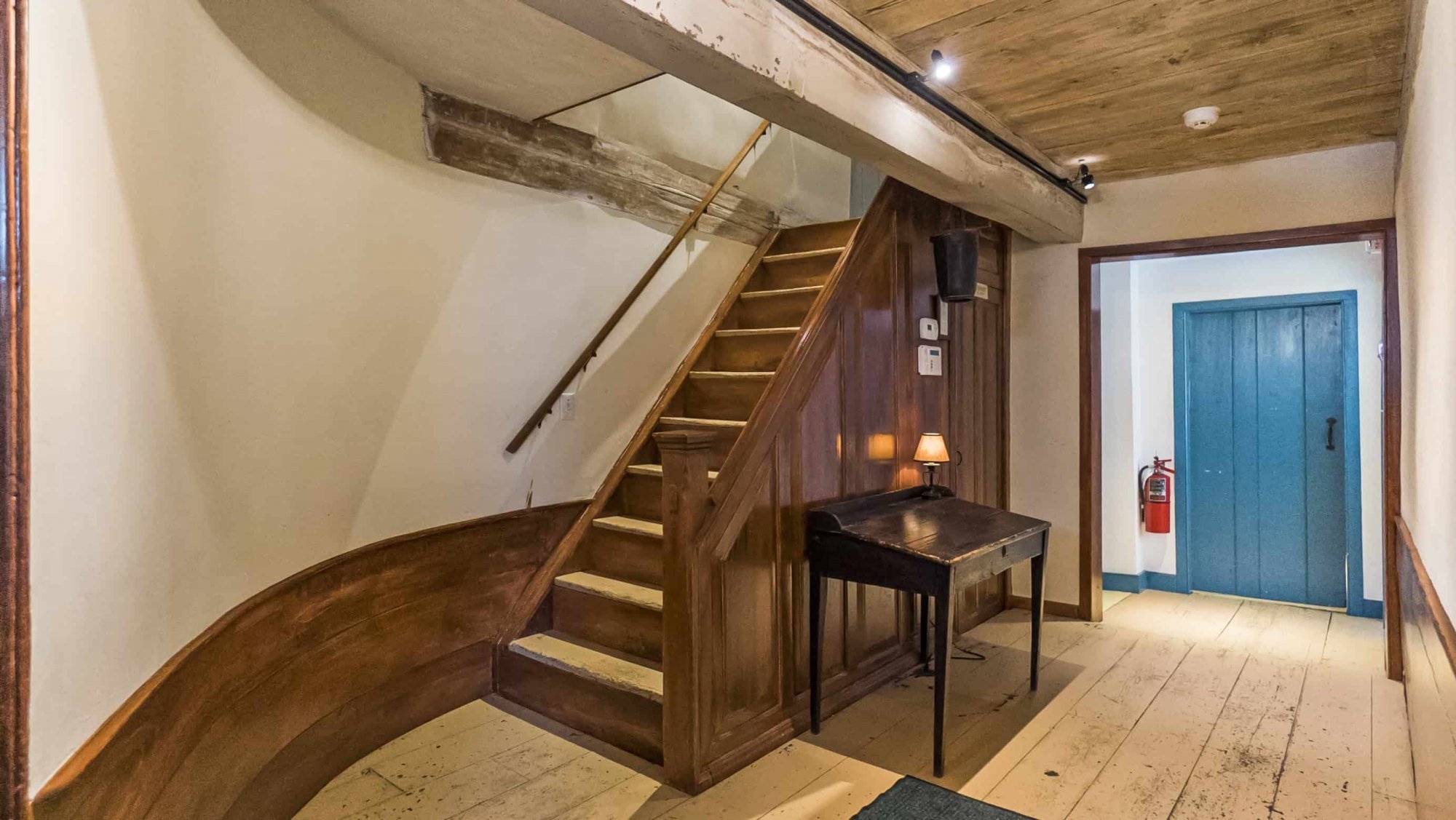
Will Tatum: In July of 1783, the owner of the Elmendorph put a for sale ad in the New York Packet describing the building. This is the original entrance of the Elmendorph Inn, it's the classic center hall colonial that was described in that ad as “an entrance that runs the entire length of the building.” When you hear that term “center-hall colonial,” this is it! It's one corridor that takes you from the front to the very back with rooms arranged to either side. And because the ad also describes the Elmendorph as a two-story building we know this wonderful staircase is original. The second floor, unlike many homes of the era, was a public space that they wanted to encourage foot traffic to. So when they built the Elmendorph, they made the staircase a lovely piece of architecture.
The Elmendorph Inn Taproom
The Locals Hang Out, 1700’s Style
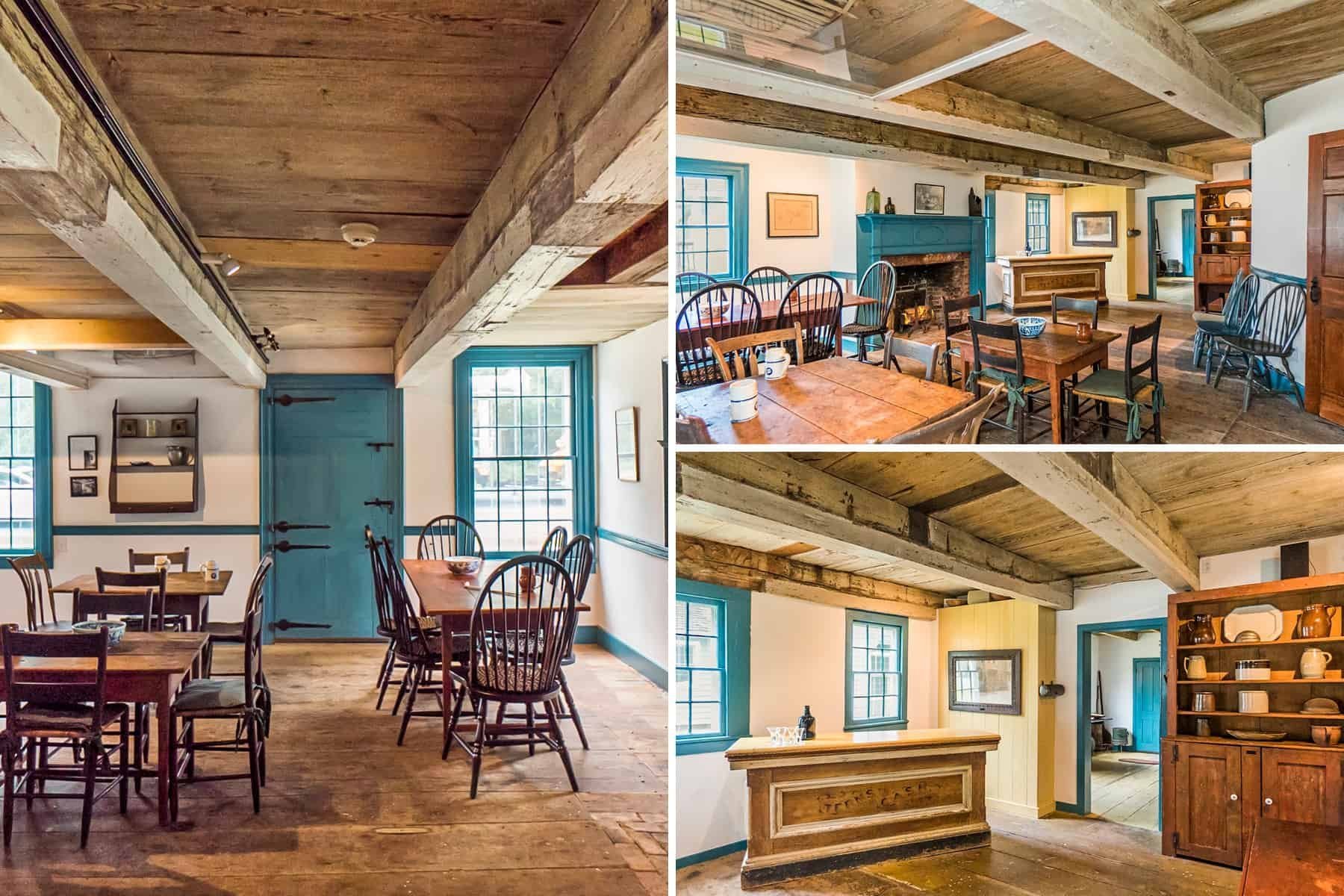
Will Tatum: This is one of the "three commodious rooms" mentioned in the July 1783 for sale ad. Being sited on the post road, this was an excellent place to welcome locals and people traveling on the stagecoach line. There are two features we like to point out here. The first being the huge timbers on the ceiling that were part of the building's original framing. Back in the 18th century, the ceiling would have been right at the bottom level of these frames [pointing to low-hung beams], so you can imagine how much smaller these rooms would feel back then. The second element are the small windows that are called six-over-sixes because they have six panes of glass in each sash. These windows would've been the only source of light. So, you're talking about a low ceiling with little light, lots of smoke from the fireplace and smoking pipes, and a very loud, convivial atmosphere.
The Elmendorph Inn Kitchen
Feeding Travelers In The 18th Century
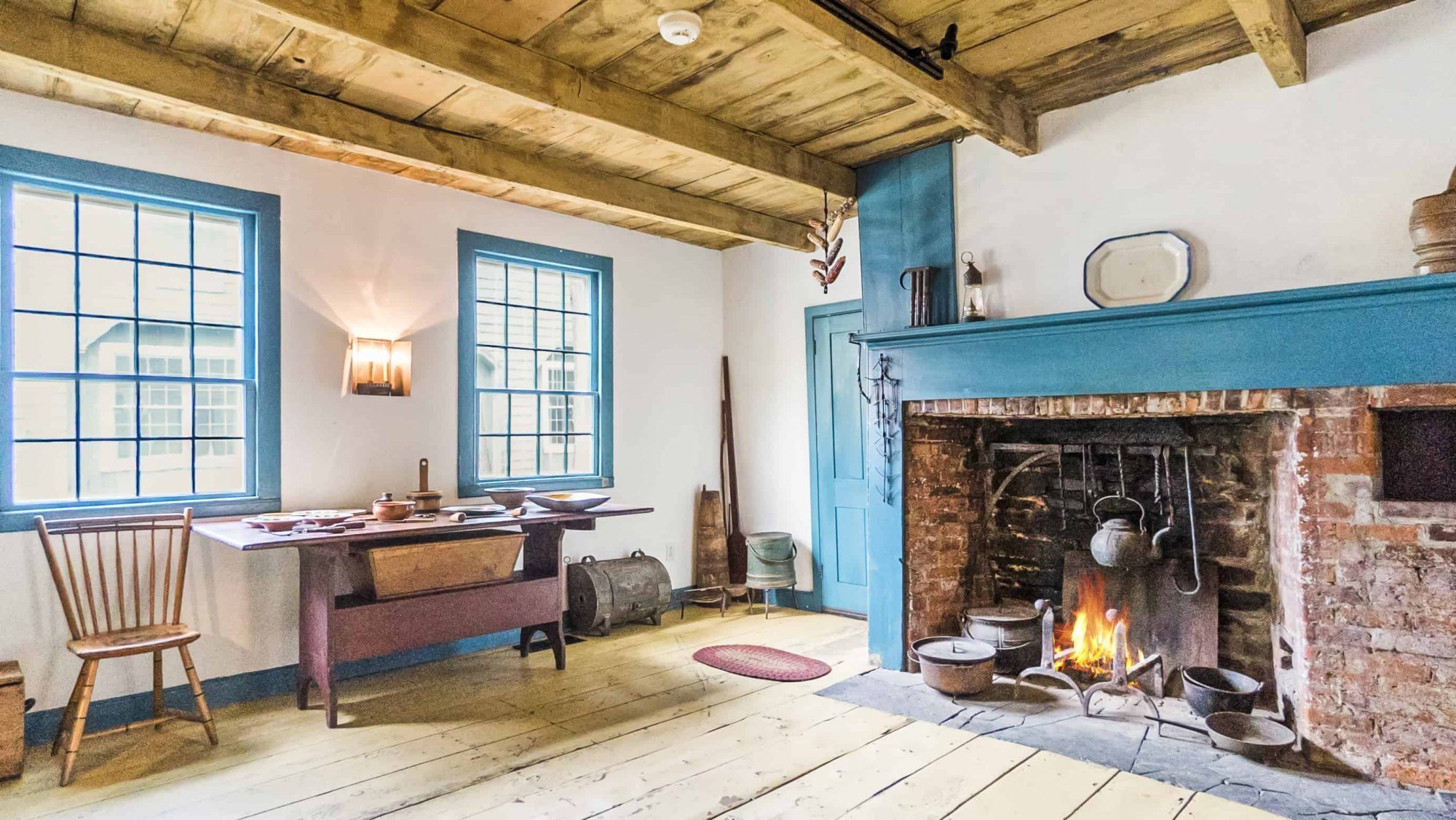
Will Tatum: The Elmendorph Inn was a full-service establishment on the post road, so the kitchen was the heart of the building. The spaces to highlight here are not only the cooking hearth where main courses were made, but also the entrance to a beehive oven - an essential space dedicated to baking bread; a staple of the diet in both Colonial and Early Federal America.
One of Tatum’s initiatives was the Dutchess County Historic Tavern Trail, which held one of its presentations at the Inn, bringing together history and local cuisine. The Inn can be rented for small events (including but not limited to intimate weddings, bridal showers, and private meetings) and has a modern full-service kitchen to support catering these events.
The Elmendorph Inn Parlor
An Upscale Stop-Over and General Store
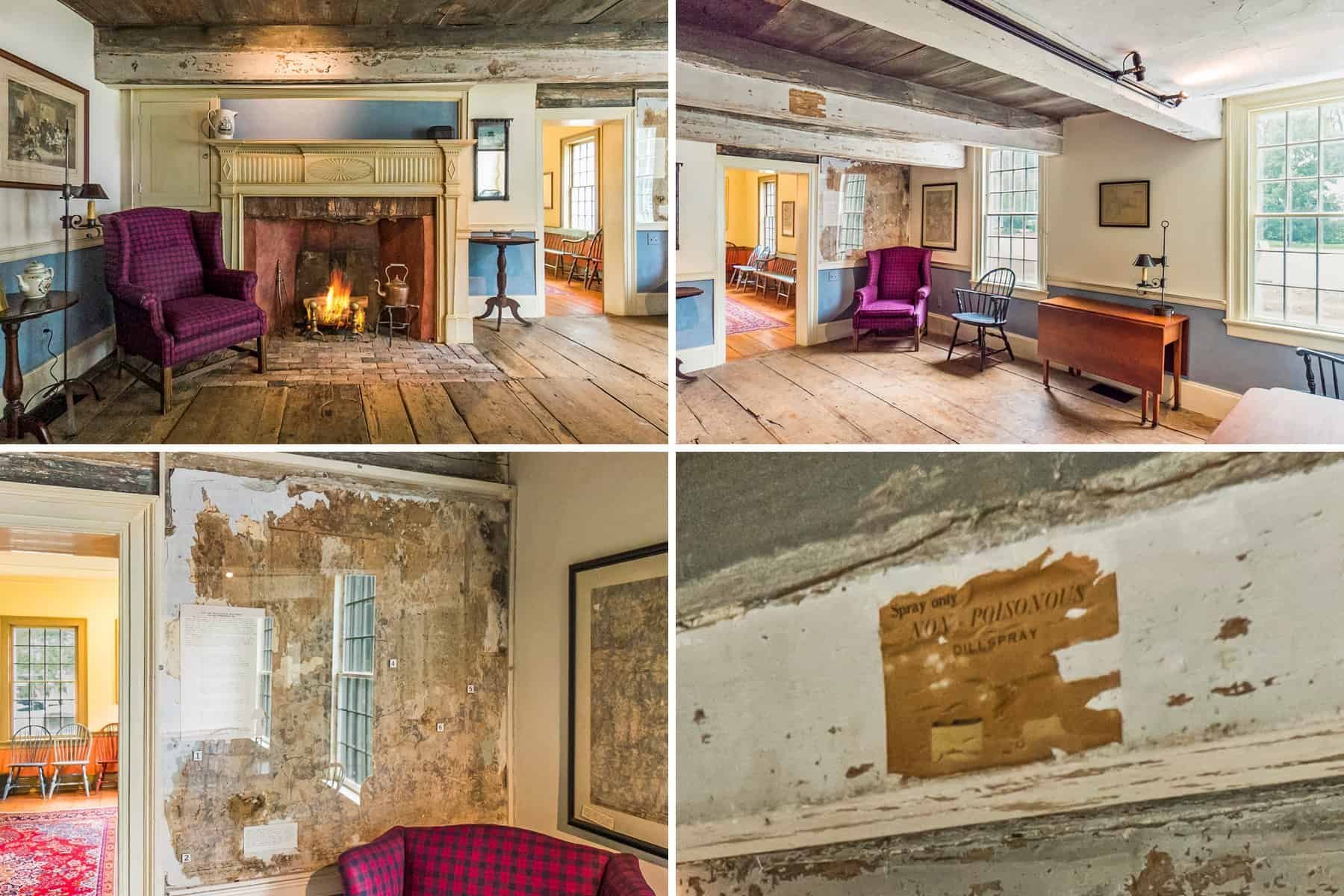
As Elisabeth, Will and Marty head to the parlor, they discuss Historic Red Hook, a non-profit volunteer organization which maintains the inn as a community center, where they present public programs, often partnering with other Red Hook groups.
Will Tatum: The Parlor is another of the "three commodious rooms" from the 1783 For Sale Ad. In contrast with the taproom, this is where the fancy people were - where gentry and stage coach passengers stopped to rest between Albany and New York City. This room has beautifully preserved elements that remind us that this building has been continuously inhabited and in use for over 200 years. One bit of evidence is a lovely "poison spray" ad which dates back to the 1930s when this building was used as a general store with two gas pumps out front. The other is our display in the corner showing multiple layers of wallpaper, each reflecting a different decade of decoration in the Parlor and also the building at large.
The Elmendorph Inn Great South Room
A Federal Renovation & Expansion
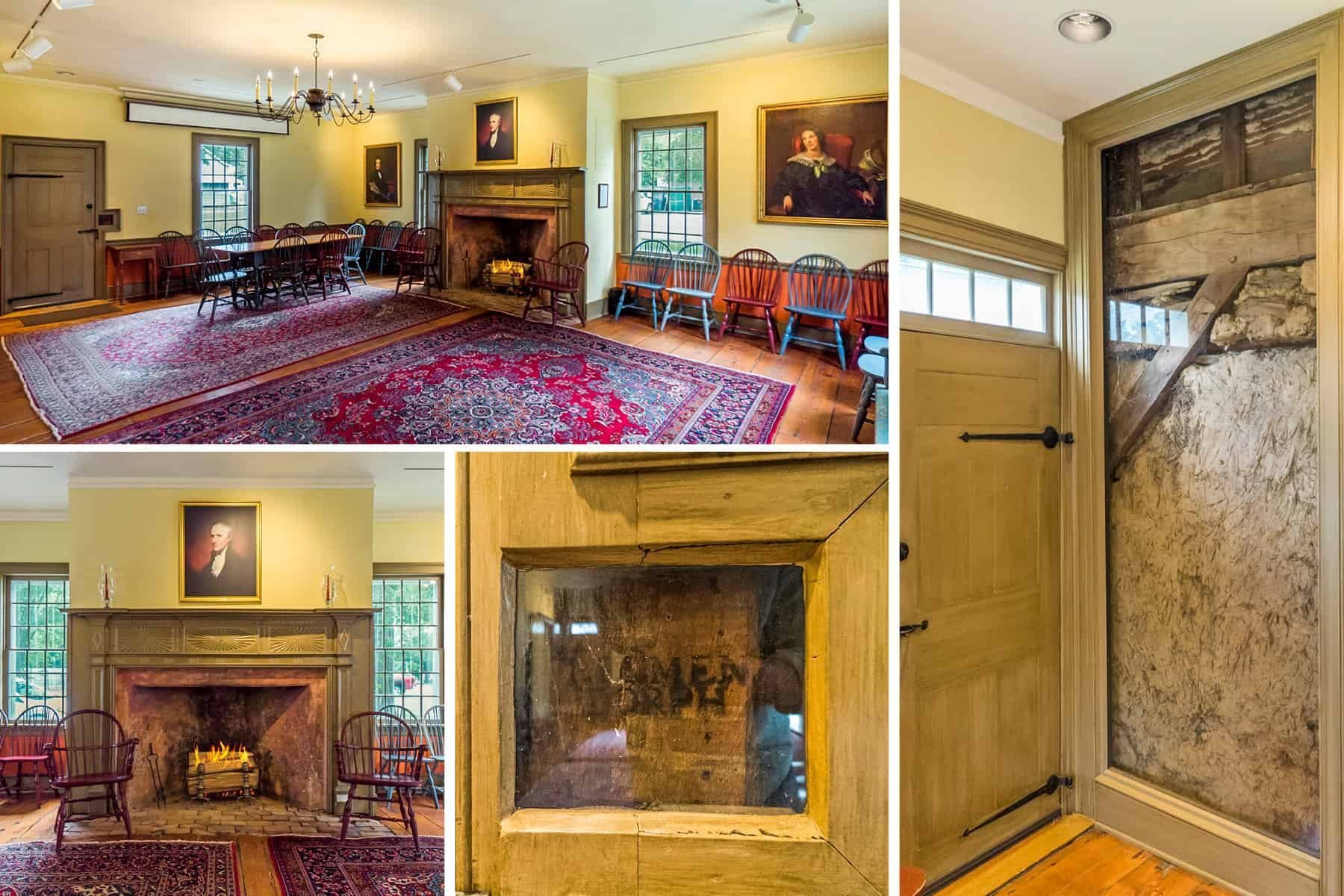
From the parlor to the Great South Room Will describes the historic elements that differentiate the rooms of the original Inn from those renovated at the end of the 18th century.
Will Tatum: The great south room is where the name of the inn was derived. In 1796, a fellow named John Elmendorph took over operation at the inn, building this room in the great Federal style of the 1790s and renovating and updating some elements throughout the inn. For example, the ceilings and windows here are much larger than they are in the Taproom. The windows are twelve-over-twelves instead of the six-over-sixes we saw in the Taproom. The entire front of the building, where all of the customers entered, has that 1790s renovation work which can be seen in the larger 12-over-12 window sizes. We also have this magnificent Federal fireplace in the Great South Room - when this fireplace was built, the other fireplaces throughout the building were renovated into their current Federal form.
There are a couple of points of particular interest in the Great South Room. One is in the corner - a plexiglass sheet behind which you can see the exterior wall of the 1783 building. You'll see the huge oak framing timbers, as well as what looks like a bunch of straw and mud.. because it is a bunch of straw and mud. That was the insulation of the 18th century. Over by the door that leads out to Cherry Street, there's another small plexiglass panel showing a brand on one of the framing timbers that reads “I. Elmendorph.” In the 1790s, “I” also stood for “J" so that's how we both get the name of the inn and the approximate date of construction for this room. On the wall, there are three portraits. The two flanking portraits were painted by renowned New York artist, Edward L. Mooney, painted of his sister Anne-Marie Pier and her husband, Benjamin Pier. These paintings were done in Upper Red Hook in the 1860s. Above the mantle is a portrait of Egbert Benson, a remarkable local figure who led the committees of safety during the American Revolution, completed a larger number of duties in the post-war government, and who also founded the New York Historical Society.
The Elmendorph Inn Second Floor
Overnight Accommodations For Clientele Of Any Class
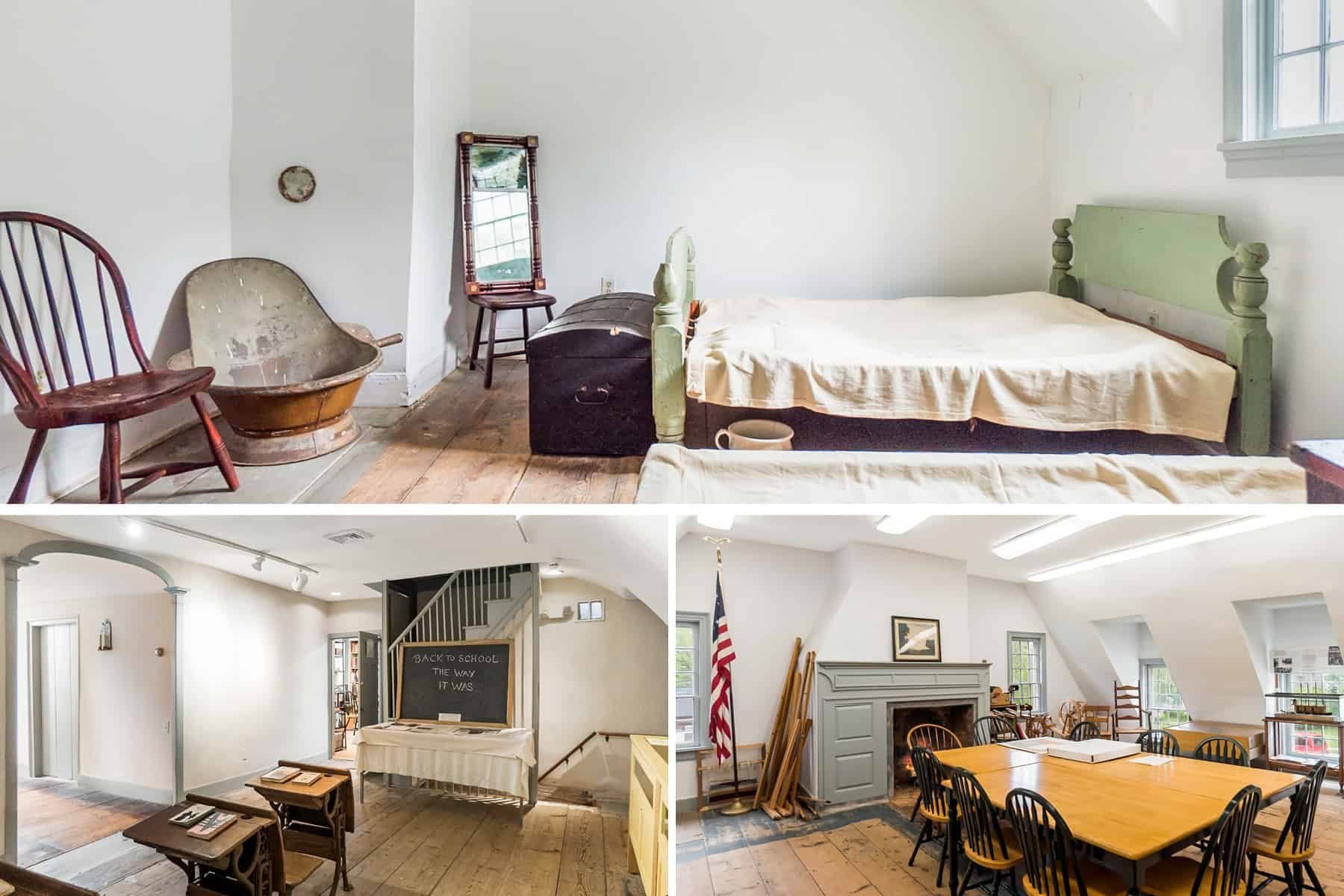
Will Tatum: As mentioned, much of the information on the history and dating of the Elmendorph can be found in that for sale ad from the New York Packet. For example, this is how we know that there were "three commodious rooms"; three fireplaces throughout - two on the ground, and one on the second level; and a garret, which is a private room located here on the second level. The garret would've been a huge selling point because the second floor of inns were usually meant for overnight accommodation. Having a private room meant you would attract a different class of clientele and would be able to charge more. Attached to this room are stairs leading up to the "Map Room" which sits above the Great South Room and is part of that 1790s renovation and expansion conducted by John Elmendorph.
The Archive Room
Historic Red Hook
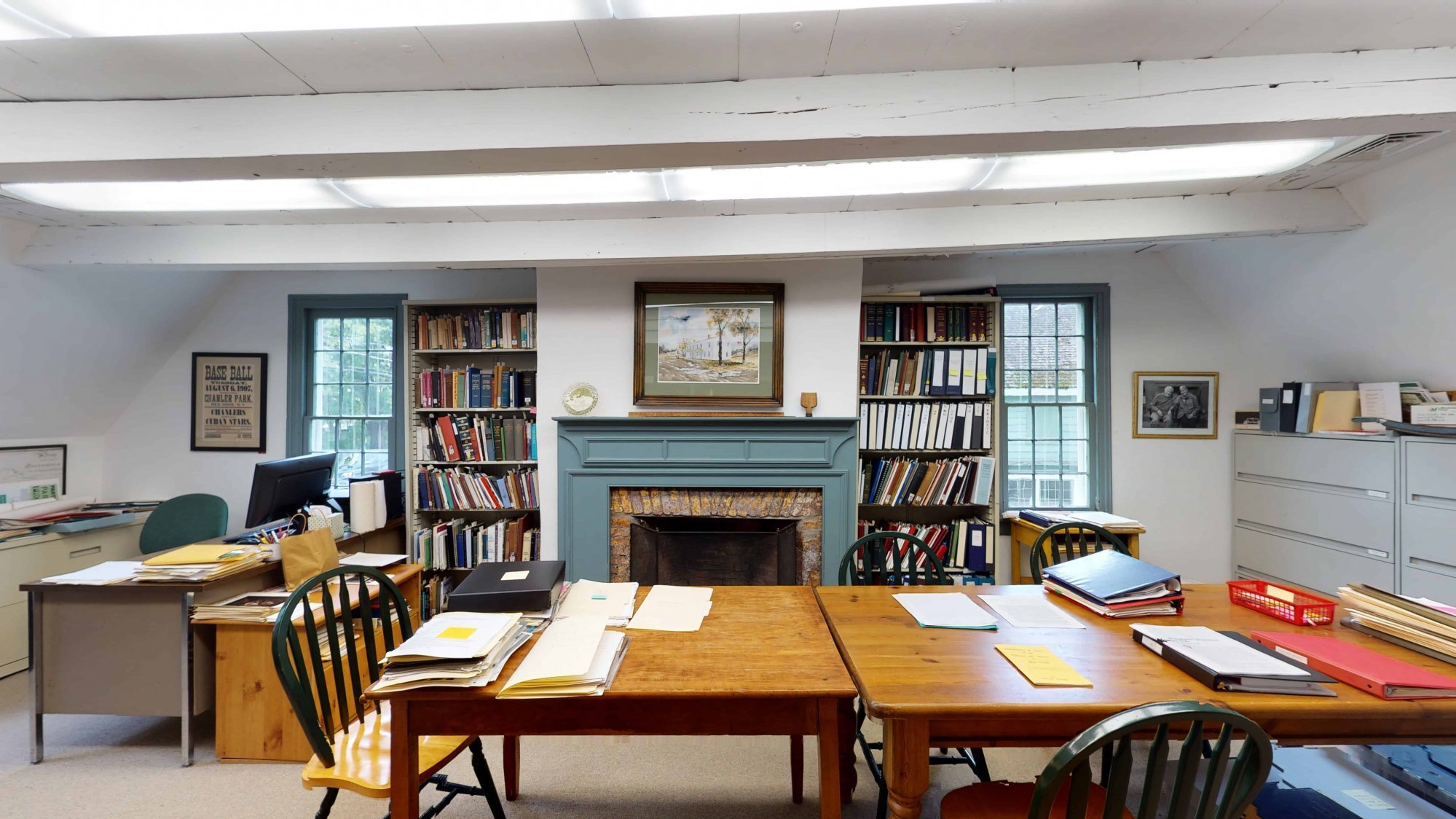
Marty Reilingh: I've asked Elisabeth not to forget to tell us about the archive room, because this is a room I've used from time to time. When I have a historic listing, it's fun to find out about the home, who owned it, and perhaps sprinkle some interesting details into the listing.
Elisabeth Tatum: Our archives are open to researchers, whether you are interested in looking for history on your home or for more information about your family. We're here and available for appointments.
For more information on Historic Red Hook, The Elmendorph Inn and The Red Hook Greene project visit Historic Red Hook’s website here. For more information on our 3D imaging or to suggest another community tour project contact us:
Contact Us
Browse Dutchess County Real Estate:
Explore The Communities Of The Hudson Valley
Explore Our Popular Upstate NY Communities

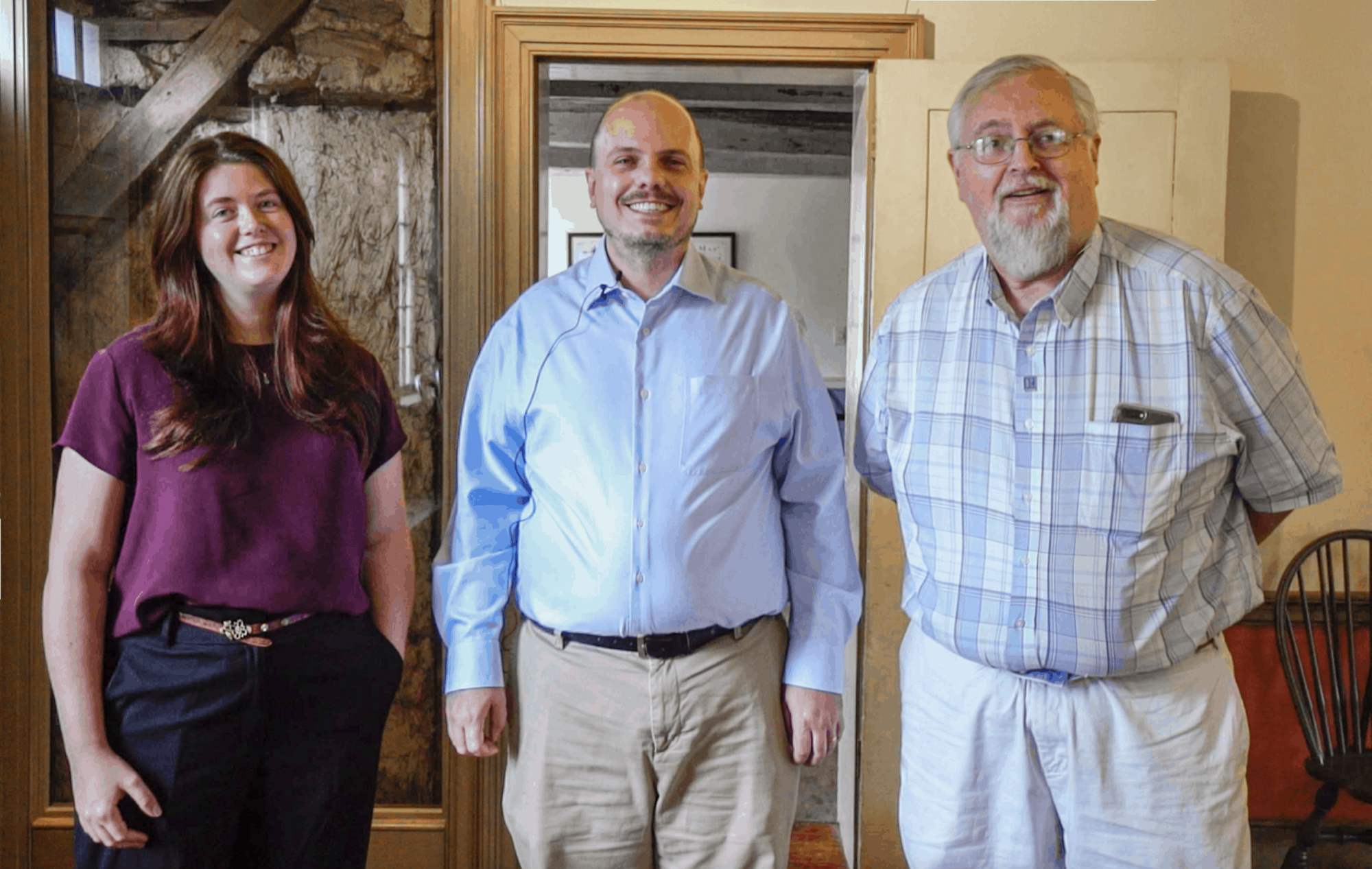

Leave A Comment